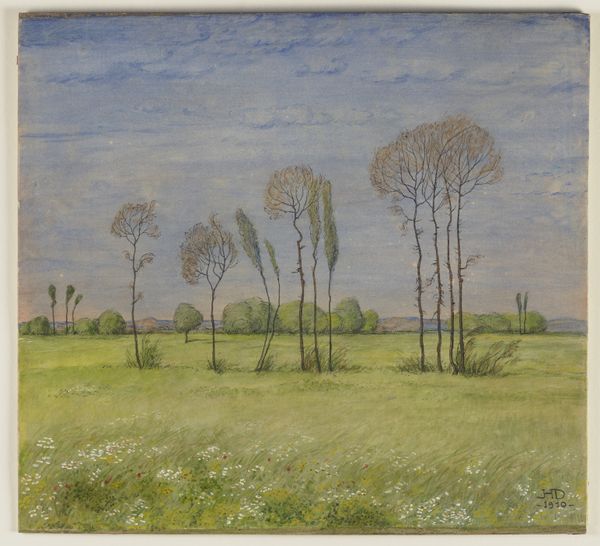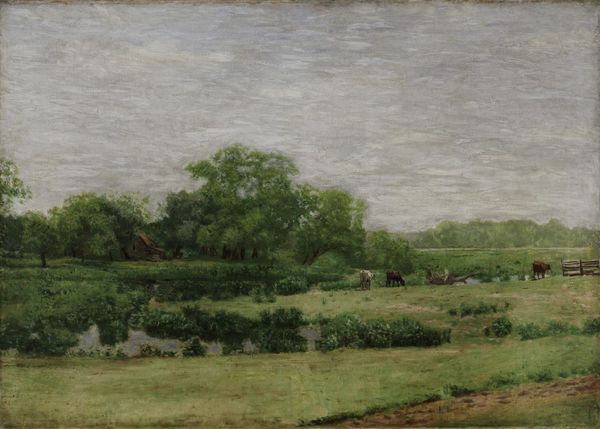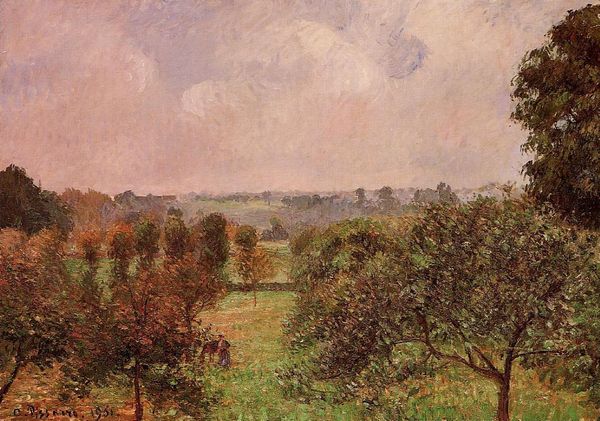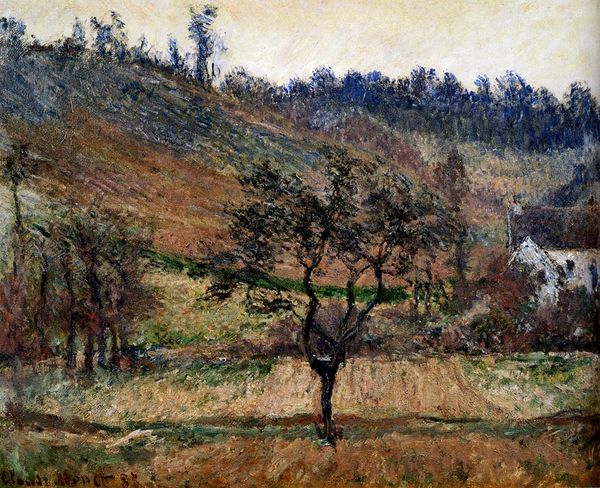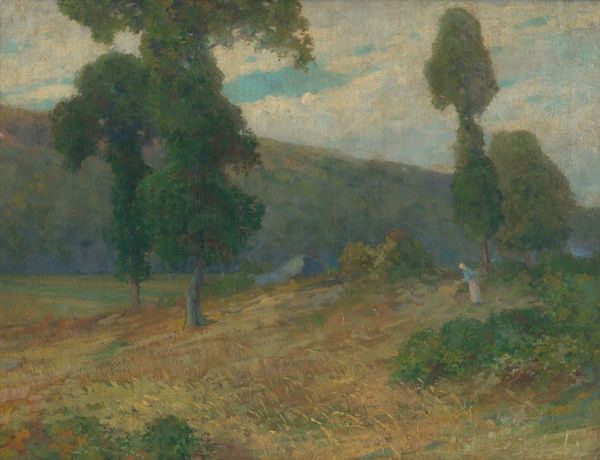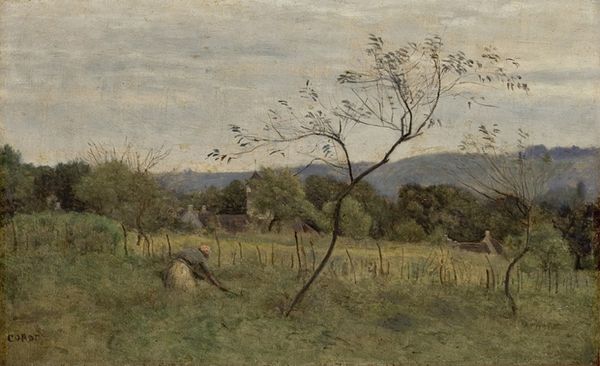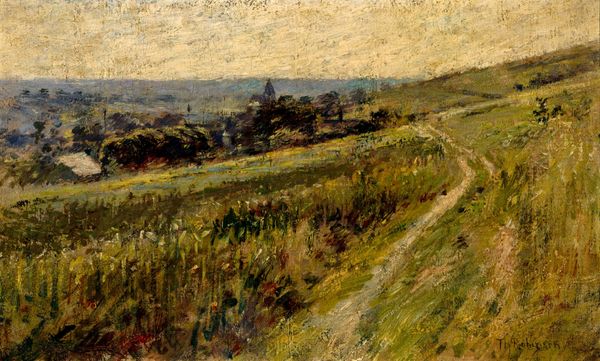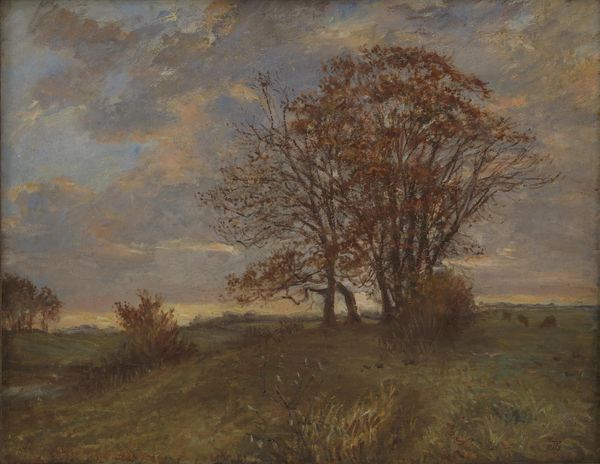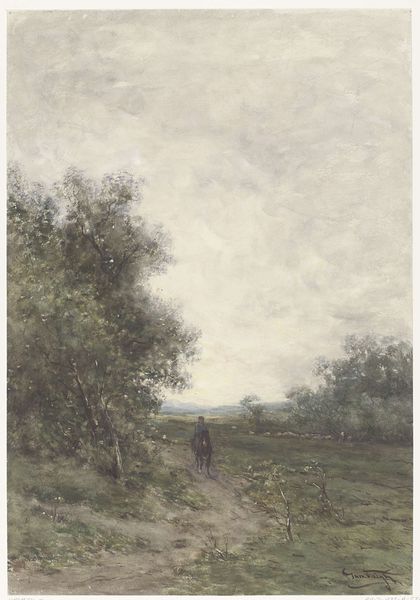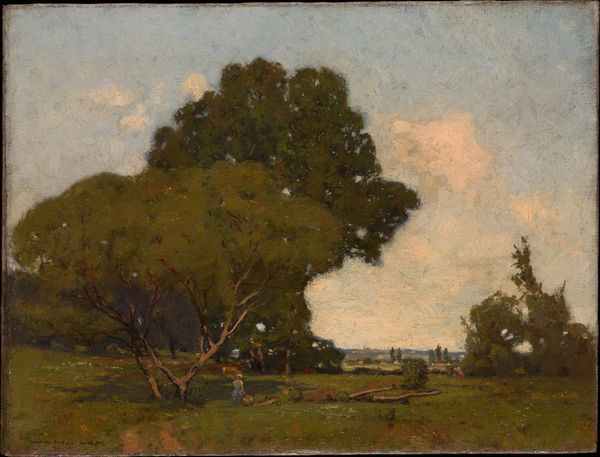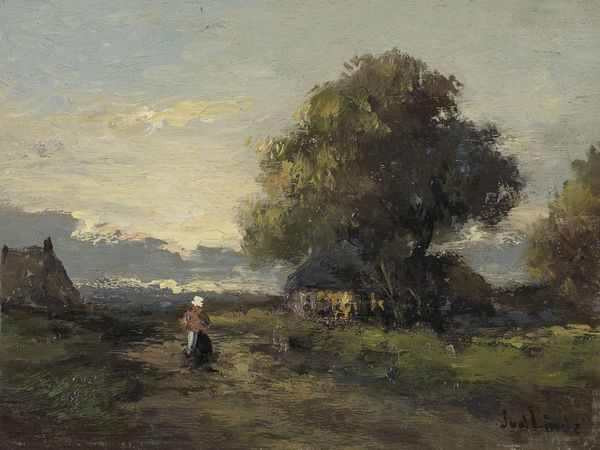
Copyright: Public domain
Curator: I find this “Landscape” by Hans Andersen Brendekilde, created in 1915, quietly compelling. What’s your initial impression? Editor: Melancholy. There’s a subdued quality to the palette—it’s almost entirely muted greens and grays—that evokes a sense of stillness, maybe even a bit of loneliness, wouldn't you agree? Curator: Yes, there’s a certain emotional restraint. The trees, for example, they form an interesting motif. Lining the horizon, they give off the appearance of watchful sentinels of the Danish countryside and I wonder, what events might have befallen them through their watchful presence? Editor: Definitely sentinels. And considering it was painted during World War I, the somber tones resonate with the unease felt across Europe. Even seemingly tranquil landscapes couldn't escape the historical context, which leads to many political and philosophical debates. Do we have control over what the "ideal" image is or how it is perceived by the masses? Curator: Precisely. It feels very grounded and unadorned. These motifs of trees evoke a history reaching far beyond this 20th century image. As one thinks about these rolling pastures, one wonders who walked there and to what end? It is, perhaps, why genre-painting like this one holds such weight—to remind us of those simple human-like connections to the land that can often be looked over or swept aside. Editor: It really asks us to question what is being documented, what we're allowed to see, what remains obscure. How does plein-air painting then transform itself when it reaches gallery walls? Curator: I hadn't thought about how time shifts images when hung in such contrasting contexts! Thanks, it’s helpful to situate this piece within these historical, material, and art-world forces. I find these discussions of "cultural residue" compelling. Editor: It’s a constant process, I find. Considering these layered dimensions shifts how I initially considered Brendekilde’s piece; how, what looked familiar, suddenly is a marker for many invisible struggles in modern history.
Comments
No comments
Be the first to comment and join the conversation on the ultimate creative platform.
